The Bureau of Meteorology (BoM) has declared there is now a 70% chance of La Nina occurring this Spring and Summer.
We can see it building by looking at the surface of the ocean, and noting how much warmer or cooler than average it is.
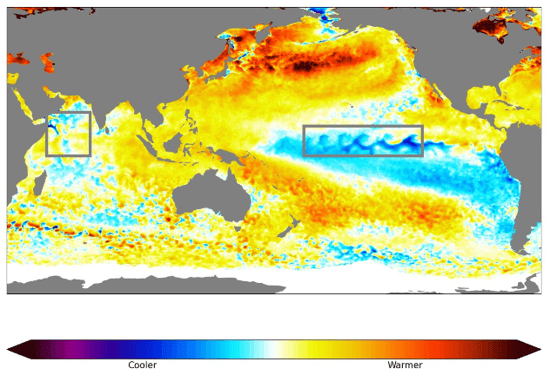 When there are cool blues in the boxed area out in the Pacific Ocean, offset by warm oranges off Indonesia and Queensland, then that imbalance drives behaviour in the atmosphere.
When there are cool blues in the boxed area out in the Pacific Ocean, offset by warm oranges off Indonesia and Queensland, then that imbalance drives behaviour in the atmosphere.
The warmer than average water evaporates into the air, becoming a stream of moisture that is pushed towards Australia.
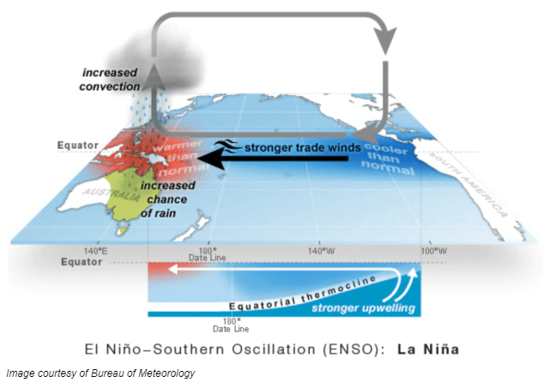 Most international weather models are forecasting that we will cross the La Nina threshold in Spring, and the remainder are close to that trigger point. That means every piece of guidance likes La Nina or very close to it.
Most international weather models are forecasting that we will cross the La Nina threshold in Spring, and the remainder are close to that trigger point. That means every piece of guidance likes La Nina or very close to it.
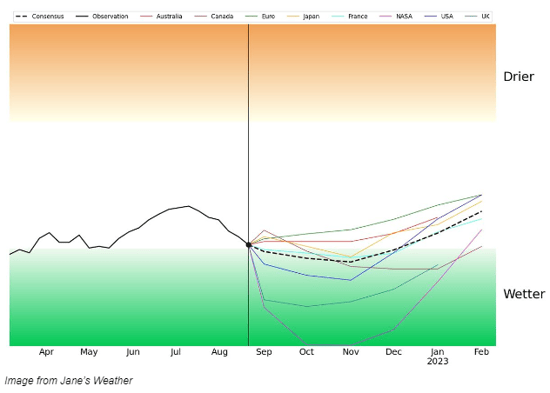 So, this Spring and Summer will have a feed of tropical moisture coming in from the Pacific Ocean, for the third year in a row.
So, this Spring and Summer will have a feed of tropical moisture coming in from the Pacific Ocean, for the third year in a row.
When that feed of moisture runs into low pressure, it is converted into rain. If the low is deep, then that rain is likely to be intense. If the low or trough lingers over a particular area then the rain totals are likely to be extreme.
This doesn’t mean it’ll be wet all summer. Whenever high pressure takes over, we take a dry break… but if you’re affected by the weather you will want to continually monitor the forecast to see when low pressure is heading your way.
In the next week, conditions look fairly benign from Wednesday through to Saturday. There is a low off the east coast, but it’s far enough off the coast to have limited impact. Instead, high pressure is widespread, and there is hardly any rain.
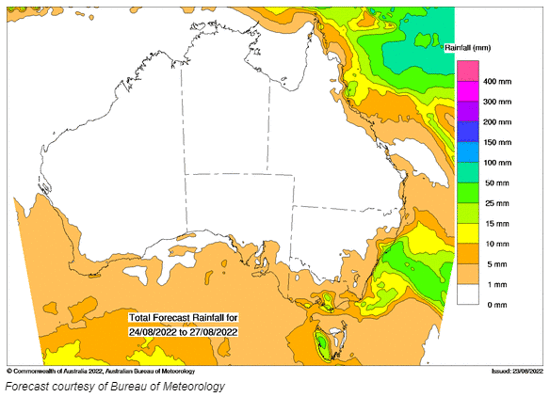 Then from Sunday through to Wednesday, activity ramps up. Low pressure interacts with moisture from the Pacific Ocean to create rain over these parts of eastern Australia:
Then from Sunday through to Wednesday, activity ramps up. Low pressure interacts with moisture from the Pacific Ocean to create rain over these parts of eastern Australia:
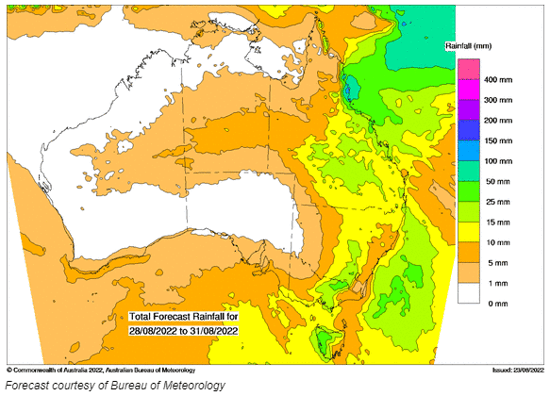 No strong signal for anything significant yet, more like a widespread drink of 10 to 40 mm for many locations from Queensland through to Tasmania. Keep an eye on the forecasts to see if anything intensifies as this period approaches.
No strong signal for anything significant yet, more like a widespread drink of 10 to 40 mm for many locations from Queensland through to Tasmania. Keep an eye on the forecasts to see if anything intensifies as this period approaches.
At Jane’s Weather, we have three global weather models working together to produce a Consensus forecast, powering our alerts service to make sure you’re notified of any weather that can impact your farm, from temperatures, to wind, to rain, to good spraying conditions.
Jane Bunn is Channel 7 Melbourne's resident weather forecaster and presenter, and the founder and CEO of Jane's Weather. Head to Jane’s Weather via the link below to personalise our alerts service for any type of weather that affects you.
Minimise risks. Maximise opportunities. Take advantage of the weather.
 Results
Results

